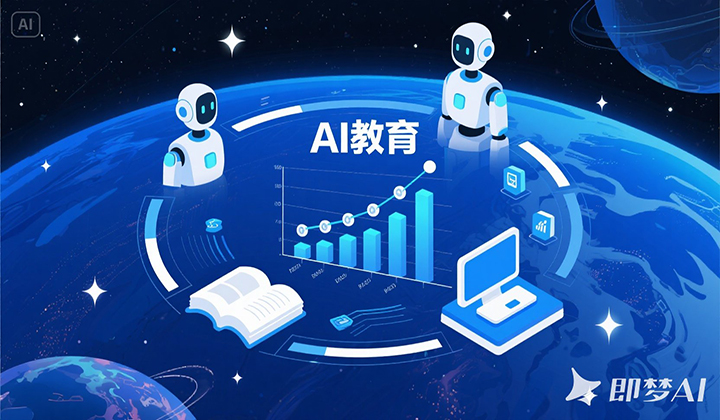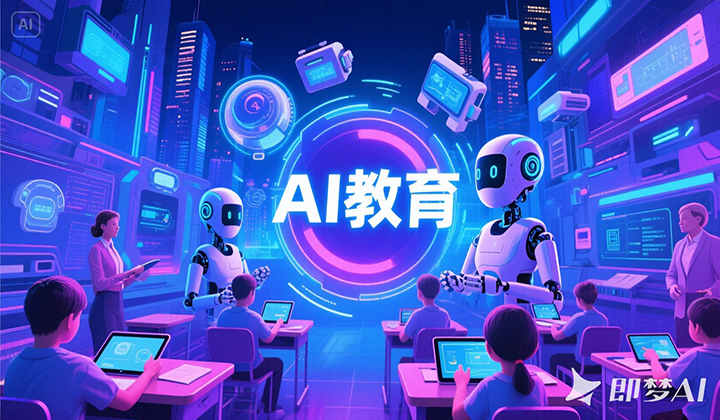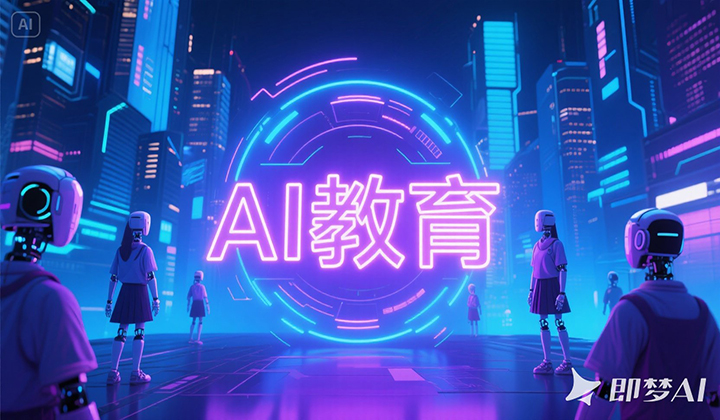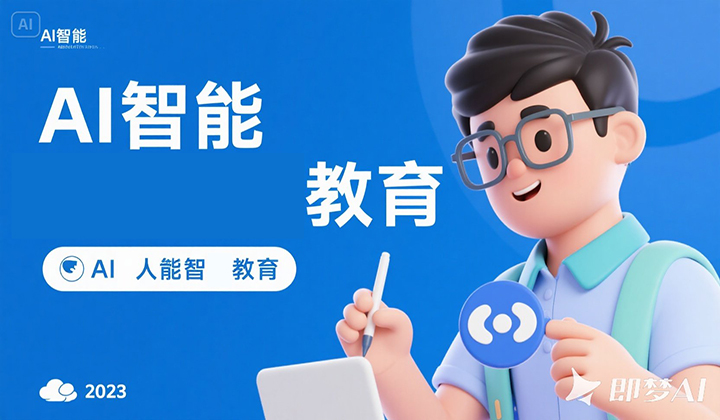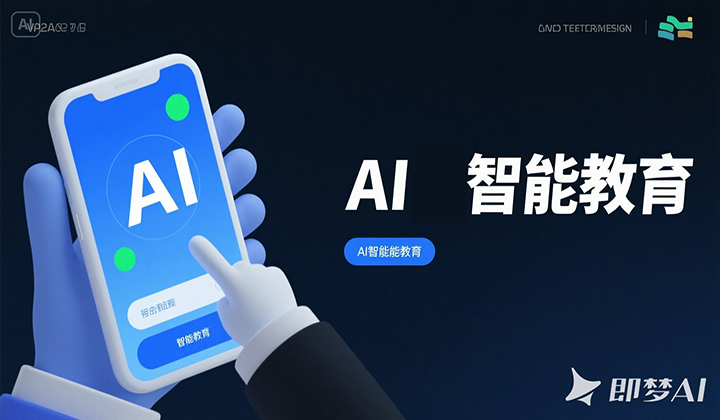The diversity of AI in education
单涡轮马猴烧酒 2025-05-23
The diversity of AI in education is reflected in multiple dimensions such as application scenarios, technological approaches, educational targets, and content forms. It integrates technologies and needs from different fields to provide diverse solutions for personalized learning, educational equity, and teaching efficiency. Below is an analysis of its diversity from various perspectives:
1. Diversity of Application Scenarios
AI technology is penetrating all stages of education, creating differentiated application scenarios:- Personalized Learning Support
- Adaptive learning systems: Analyze students’ data (e.g., accuracy rates, time spent, and mastery of knowledge points) to dynamically adjust learning paths. Examples include Knewton and China’s "Zhixuewang," which push customized exercises and resources for students.
- Intelligent Q&A and tutoring: AI chatbots (e.g., Google’s Duolingo language learning assistant) provide real-time answers and simulate one-on-one teaching.
- Teaching Efficiency Optimization
- Automated homework grading: AI recognizes handwritten text and grades essays or math problems (e.g., the "Haofenshu" platform), reducing teachers’ repetitive workload.
- Classroom management assistance: Computer vision technology analyzes students’ in-class behaviors (e.g., attention levels, hand-raising frequency) to help teachers adjust teaching paces.
- Educational Equity and Inclusivity
- Coverage of remote areas: AI-driven virtual classrooms and VR courses (e.g., "Weihou Live" online classrooms) break geographical barriers, enabling rural students to access high-quality teaching resources.
- Support for special groups: Develop voice-interactive teaching materials for visually impaired students and social training AI programs for children with autism (e.g., MIT’s "CogniToys" smart toys).
- Vocational Education and Skills Training
- Virtual simulation training: AI combined with VR/AR technology simulates practical scenarios like electrician work or medical surgeries (e.g., "EON Reality" industrial training systems), reducing training costs.
- Career skills assessment: Analyze resumes and job requirements via AI to provide personalized career development advice (e.g., LinkedIn’s Skill Assessments).
2. Diversity of Technological Approaches
AI education relies on the cross-integration of multiple technologies, forming different solutions:| Technology Type | Typical Applications | Case Studies |
|---|---|---|
| Machine Learning | Knowledge graph construction, learning effect prediction, personalized recommendation | Squirrel AI (Yixue Education): Uses Bayesian networks to analyze knowledge mastery. |
| Natural Language Processing (NLP) | Intelligent Q&A, essay grading, speech interaction | iFLYTEK’s "Zhixuewang": Automatically analyzes essay semantics and structure. |
| Computer Vision (CV) | Classroom behavior analysis, handwriting recognition, image-based teaching | Tencent Education’s "Smart Homework System": Identifies handwritten answers and matches knowledge points. |
| Virtual Reality (VR/AR) | Immersive learning environments, virtual experiments, scenario simulations | Huawei’s "Hetu" AR classroom: Visualizes historical or geographical scenes. |
| Multimodal Interaction | Interactive teaching combining voice, gestures, and facial expressions | Microsoft’s "Dynamics 365": Analyzes student engagement through body language. |
| Blockchain Technology | Learning achievement certification, educational resource copyright protection | AntChain’s "Education Brain": Records learning data and generates tamper-proof digital certificates. |
3. Diversity of Educational Targets
AI education caters to people of all ages, meeting differentiated needs:- Early Childhood Education (3–6 years)
- Focus on enlightenment and interest cultivation: AI story machines (e.g., "Niutiting") use voice interaction to play songs and fables, combined with image recognition for vocabulary learning.
- K12 Education (Primary to High School)
- Focus on exam preparation and competency development: AI question banks (e.g., "Yuan Ti Ku") provide real-exam analyses, while intelligent essay grading systems identify logical and grammatical errors.
- Higher Education
- Support for research and specialized learning: AI literature review tools (e.g., "ResearchRabbit") quickly synthesize academic materials, and programming platforms (e.g., "LeetCode") provide real-time code feedback.
- Adult Education and Lifelong Learning
- Vocational skills and hobby development: AI language learning platforms (e.g., "Rosetta Stone") customize courses for work scenarios, while AI coaches for painting/music (e.g., "DeepArt") offer creative guidance.
- Special Education Groups
- Customized support solutions: Develop sign-language translation AI glasses for the hearing-impaired and text-to-speech systems for dyslexic learners (e.g., "NaturalReader").
4. Diversity of Content Forms
AI has transformed educational content from single-text formats to 多元形态 (diverse formats):- Interactive Content
- Gamified learning: AI-designed educational games (e.g., "Code.org"’s programming puzzles) enhance engagement through real-time feedback.
- Intelligent conversational courses: Users complete learning via chat interfaces with AI (e.g., "Memrise"’s language dialogue training).
- Generative Content
- AI-generated personalized exercises: Tailored questions based on students’ weak points (e.g., "Zuoyebang"’s "AI Diagnosis" feature).
- Text/image/video generation: Large models like GPT-4 assist teachers in creating lesson plans and instructional images, or AI video tools (e.g., "Synthesia") produce virtual teacher lectures.
- Cross-Disciplinary Content
- STEM education: AI simulates physics experiments (e.g., "PhET Interactive Simulations") or cultivates computational thinking through data analysis projects.
- Humanities and arts education: AI analyzes emotional contexts in literary works (e.g., GPT-4’s analysis of Dream of the Red Chamber) or aids music composition (e.g., "Amper Music" generates personalized melodies).
5. Diversity of Implementation Models
AI education is implemented differently across scenarios and needs:- Pure online models: e.g., VIPKID’s AI foreign teacher classes, Coursera’s intelligent recommendation system.
- Online-offline integration (OMO): Offline classrooms use AI for attendance and 学情分析 (learning analytics), while online platforms push review materials post-class (e.g., New Oriental’s "OMO Smart Classroom").
- School-customized solutions: Enterprises provide AI teaching systems for public schools (e.g., iFLYTEK’s "Smart Classroom"), covering lesson planning, instruction, and assessment.
- Open-source and public welfare projects: e.g., Google’s "AI for Education" open-source toolkit for teachers to develop teaching applications; nonprofits like "One Laptop per Child" use low-cost AI devices to support education in underdeveloped regions.
6. Challenges and Future Trends
Despite its diversity, AI education must address issues like data privacy, algorithmic bias, teacher role transformation, and technical costs. Future trends may include:- Deep integration of large models: GPT-5, Claude 3, etc., will optimize personalized teaching experiences for more natural multi-turn dialogue tutoring.
- Embodied AI: Combine physical robots (e.g., SoftBank’s Pepper) with hands-on teaching to enhance practical skill development.
- Educational metaverse: Build virtual campuses where students use avatars to participate in AI-driven collaborative learning tasks.
- Cross-cultural adaptability: AI systems will more accurately adapt to educational policies, linguistic habits, and cultural contexts in different countries, promoting global educational equity.
The diversity of AI in education fundamentally reflects technology’s empowerment of education. Its core goal is to meet the ultimate need for "teaching students in accordance with their aptitudes" through diverse means, ensuring every learner can access a growth path tailored to their needs.







